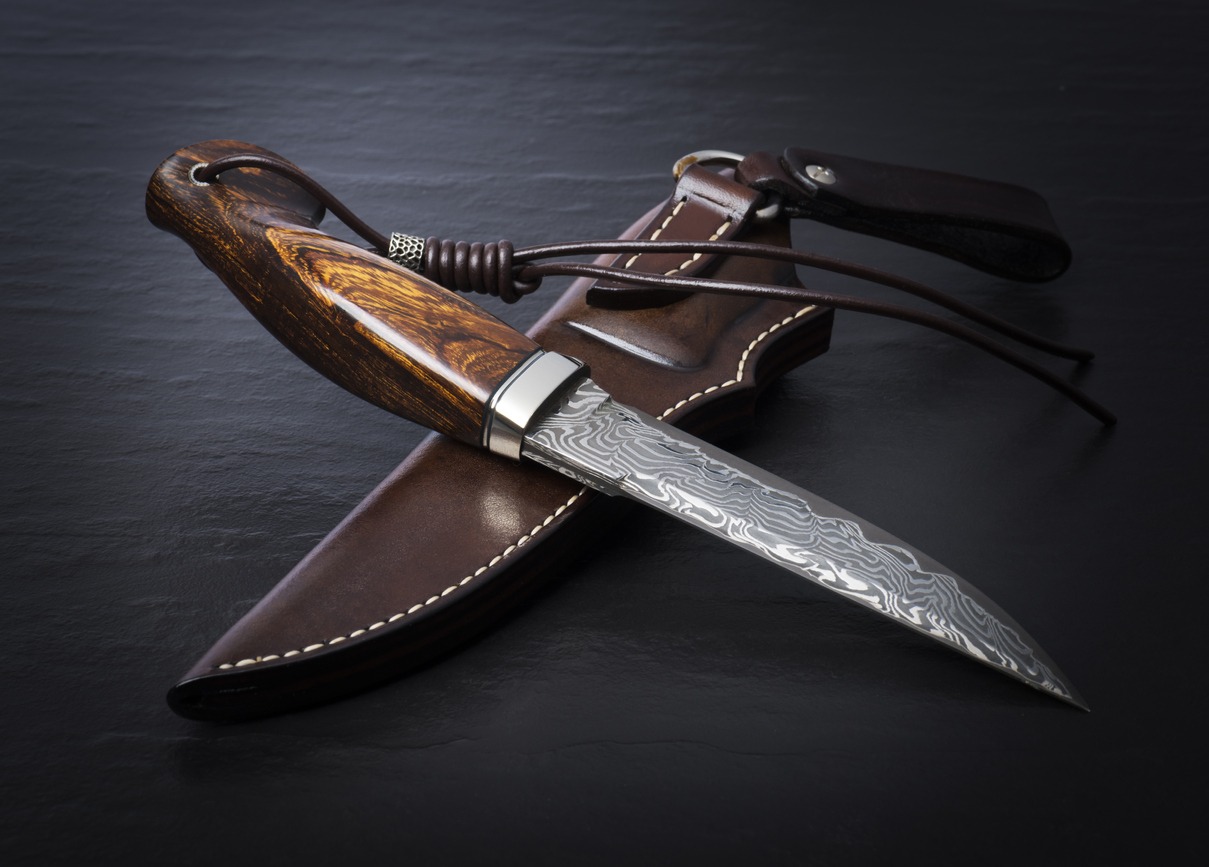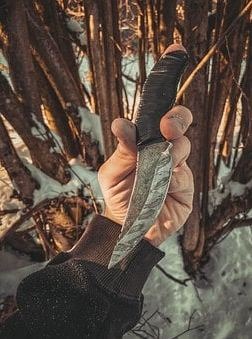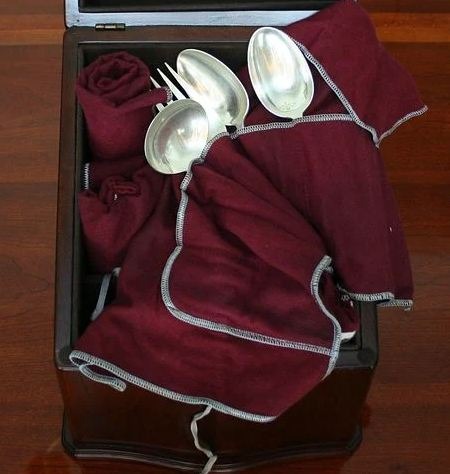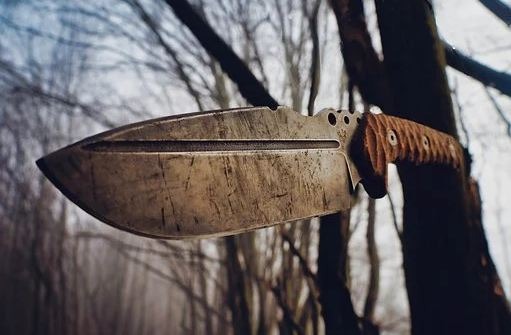Many people love collecting steel knives and swords. The ones that are of historical significance are usually considered better for collection purposes. They can be of high value as well. However, the problem arises when people are unable to maintain their steel knives and swords. One of the most liked steel knives is the Damascus steel knife. Here are a few ways to maintain your Damascus steel knife.
Lubricate the Blade
Damascus steel blades are usually made with high carbon steel, combined with very little amounts of chromium. This means the blades are prone to rust, and nobody wants their prized blade full of rust. The answer is to make sure the blade is completely dry at all times, and lubrication is an important method for achieving that. You should apply any good quality wax to the blade, and buff it with a cloth. This will ensure water cannot come in contact with the metal of your blade.
A lot of the Damascus steel blades in the market are made of stainless steel, with high amounts of chromium in them. While stainless steel doesn’t rust or get discolored, we recommend lubricating your blade anyhow, to keep it in the best shape.
Avoid Abrasives
The pattern of a Damascus steel life is the most iconic part of it. It is crucial to ensure that you avoid any harsh cloths, scrubbers, and chemicals that could damage the surface of the blade. Use a soft microfiber cloth, and clean the blade with mild dish soap, and a soft sponge only.
If somehow the pattern etched on the blade does get damaged, the best option is to send it back to the manufacturer. Damascus steel blade manufacturers provide re-etching services for their blades.
Spot-Clean Rust
Even after all your efforts, the blades might very well begin to rust. This could be because you didn’t dry it after use, or simply because the environment is humid. Whatever the case, when you see rust appearing on the blade, use a q-tip, and soft scrub to remove the rust. This is of extreme significance if your blade has pitting along with it.
Another way to avoid rust is to ensure you don’t use your blade on acidic food.
Store the Blade Properly
Never leave your knife standing in still water. After every use, wash, and then dry it properly. Use a specialty wax on the outside, and then store the blade in a place free of moisture. Making sure the temperature of the area doesn’t fluctuate constantly is also important.
We recommend you keep your blade inside a special box and take measures to avoid the blade moving around in the box. A zipper bag, padded on the inside, is another good option. While plastic is perfectly safe, it is best to stay far away from leather pouches for storage. Leather is tanned using a lot of chemicals, and the chemicals may cause the blade to get oxidized over time.
Beware of Extremely Low Humidity
The humidity you store your blade at is of extreme importance. We have already discussed that high humidity will cause the metal to rust. However, if you store the knife in extremely low humidity, the handle of the blade might start to splinter.
This is because wood, which is the most popular choice for knife handles, needs humidity to stay in top condition. Never store your knives with a dehumidifier, or a dehumidifying bar, especially in a closed space. The bar will suck all the moisture from the air in the closed space, and your handles will suffer as a result. The best option is to keep your knives in a Ziploc, and dry space, away from sources of water like sinks, or showers. The normal moisture in the air will be more than enough for keeping the handles in prime condition.
However, if the handle of your knife is made of plastic, you have nothing to worry about.
Take Care of the Pattern
The eye-catching patterns etched into the knife steel are the most characteristic part of them. This is why a considerable amount of effort must be put in to preserve them. The best option you have for pattern protection is WD-40 or some other quality oil. Once the blade is dry, take a small amount of WD-40 or the oil, and apply it to the blade using a cotton bud. Never use olive oil, or other edible oils to refresh your pattern, as these oils will go rancid. Mineral oils are readily available and are a far better choice.
A DIY method to refresh the pattern is to use black coffee. Brew a pot of the strongest black coffee you find. The coffee doesn’t even have to be drinkable, and even an expired batch will do. You just need to brew enough coffee that the blade of your knife can be completely immersed in it.
Once the coffee is done, immerse your blade completely in the brew, making sure to keep your knife’s handle out of it. The coffee should be hot for the process to work fast, as immersing your blade in cold coffee can take hours, and still not produce satisfactory results.
Every 15 minutes, bring your blade up to check its condition, but never touch the blade, or wipe the coffee down. You can remove the blade when you feel like the patterns have been refreshed enough, with the maximum time you can leave it in, being 1 hour.
Once you remove the blade, wipe the coffee off, and shine your blade with oil and wax as you normally would. You can then store it safely.
This will keep the pattern in the best condition. Refreshing your pattern is important because while a pattern can be re-etched on the blade, there are some limits to the procedure. For one, the pattern can only be re-etched a limited number of times on the blade. Secondly, every time the pattern is re-etched, the life of the blade decreases because the material is removed.
Also, while most companies perform re-etching for a small fee, it might be impossible if the model you own has been discontinued by the company. Finally, there is the cost of the procedure to consider.
Use It With Care
How much work your knife can bear, depends on the quality of steel used to create it, and ultimately the price tag. Expensive, good-quality Damascus steel blades work in almost all conditions, and there is no need to worry about them chipping with use. However, cheaper Damascus steel blades may encounter chipping, which means they cannot be used as freely as their expensive counterparts.
Maintain the Edge
The edge of the blade is the most important part of its build. If the blade lacks a sharp edge, the knife will be useless in the kitchen. To keep your Damascus steel knife at its best, you must have its edge sharpened ever so often. A dull blade will not only make the knife difficult to use, but might also cause chipping, and flaking.
Conclusion
From the above-mentioned tips, we can conclude that maintaining your Damascus steel knife is not a difficult job. One thing people need to keep in mind is that regular maintenance is crucial to the durability of the knife. You need to make routine checkups so that there isn’t any possible issue with them. We hope that you are able to maintain the Damascus steel knife with the tips provided above. You can find more tips at our Ultimate Guide to Knives.





